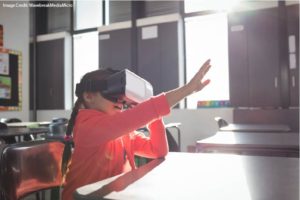Regular readers of this blog know that I like technology, but I’m not easily wowed about its educational uses. From my perspective, many “you just have to try this” technologies fail to produce nearly as much learning as they promise.
(Some of my concerns show up here and here. But: I’m a champion of laptop notes here.)
At an evolutionary level, our species evolved interacting with real, live other people. Our basic perceptual and emotional systems often work best when we’re learning with and from them.
All that being said, I’m REALLY interested in the educational possibilities that this new technology might offer.
As you’ll see in the video below, combining virtual reality (VR) with advanced haptic feedback produces remarkably persuasive visual and physical experiences.
The video’s host — a professed VR skeptic — is obviously giddy by the end of his trial.
Potential VR+haptics pedagogy
Several kinds of learning might well be much more persuasive (and interesting) with this VR/haptics combination. Physics problems with mass and momentum and magnetism, for example, lend themselves to this kind of exploration.
(As you’ll see in the video, our host can feel the weight of the virtual rock he lifts.)
Another possibility: As our research into embodied cognition gets better, we might be able to translate those strategies into VR/haptics pedagogy. (For an introduction to embodied cognition, see Sian Beilock’s book How the Body Knows Its Mind.)
For example, Susan Goldin-Meadow has done considerable research showing that different hand motions improve mathematics learning. These gloves just might make such problems more physically — and therefore cognitively — persuasive.
Just watch the video; you’ll see what I mean. (By the way: I’m not endorsing any of the products advertised here. They’re an unavoidable part of the video.)




